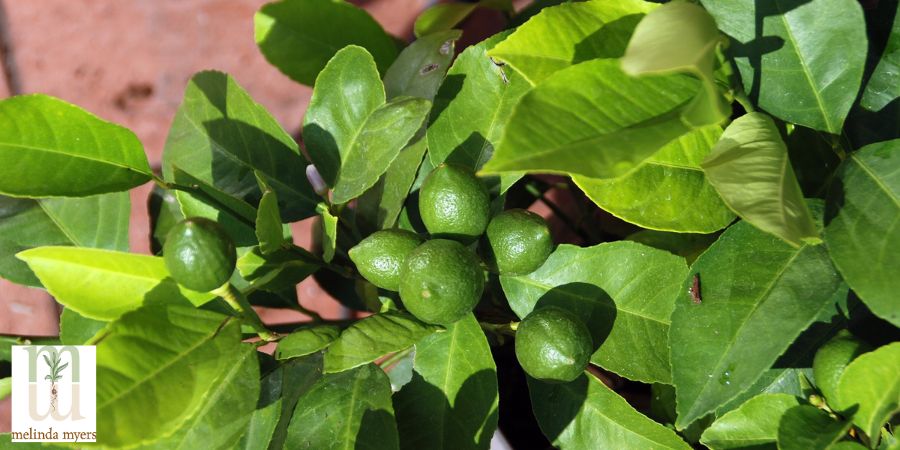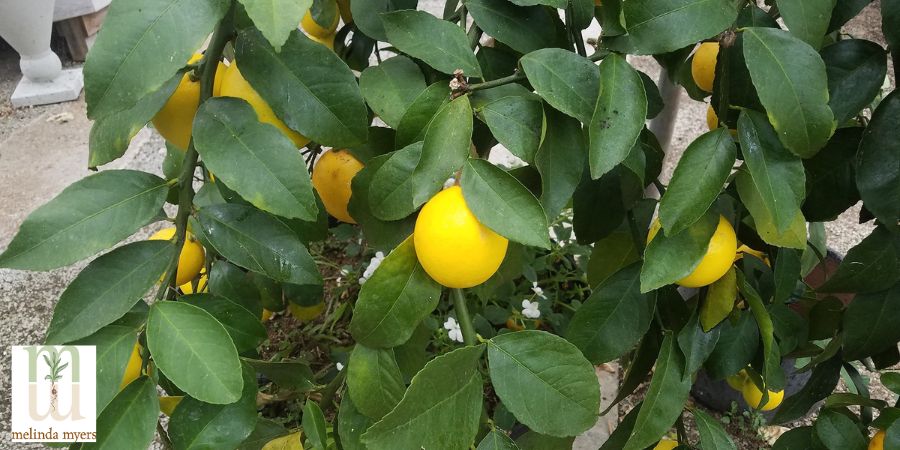Grow Your Own Citrus Plants Indoors
- horticulturist and gardening expertFebruary 17, 2024
Include a bit of homegrown vitamin C in your diet by adding oranges, lemons, and limes to your indoor plant collection. You’ll enjoy their evergreen foliage, fragrant flowers, and fruit.
Selecting the Right Plant to Grow Indoors
I know it is fun to start lemons, limes, and other citrus from the seeds of fruit we purchase at the grocery store. Unfortunately, these were harvested from larger trees and are likely to grow very large and take many years to produce fruit. Most of us do not want to wait that long for a harvest or have the space and desire to manage such a large and heavy plant. Purchasing a dwarf variety that will mature at 3 to 5 feet is a better size for growing in containers indoors. Purchasing the right plant will boost your success in less space and be easier to manage.
You can find a variety of citrus plants for sale from online sources as well as at some local garden centers. Meyer lemon is one of the most popular citrus plants for growing indoors. It produces sweet, medium-sized lemons with a soft, thin rind. Select a dwarf Improved Meyer lemon that is virus-free when available. Ponderosa lemons are bigger than Meyer lemons and have a sour, more typical lemon flavor. Key limes, also known as Mexican or Bartender’s lime, can be grown indoors and enjoyed for their small but abundant aromatic and flavorful fruit. Calamondin orange is also popular for growing indoors. Use its small, very sour fruit for marmalade and flavoring water. Consider the Otaheite orange when looking for a sweet lime flavor. This plant is not an orange but rather a cross between a lemon and a tangerine. Kumquats are another favorite of indoor citrus gardeners. The small fruit is small with a thin sweet outer skin and tart pulp. These are just a few of the more popular indoor citrus plants to get you started.

Providing Proper Care to Citrus Plants
Once you select the plants, clear some space in front of a window that receives at least six hours of direct sun. Most of us do not have sufficient sunlight in winter and need to supplement natural light with artificial lights. This is especially important if you want the plants to produce fruit, the reason most of us grow citrus plants indoors.
Keep your plant healthy and encourage flowering with daytime temperatures between 65F and 75F and 5 to 10 degrees cooler at night. Avoid locations near hot air vents and cold, drafty windows.
Grow all types of citrus in a well-drained potting medium. Many gardeners amend their potting mix with one-third of small pea gravel, pumice, turkey grit, or other material to improve drainage. Avoid those potting mixes that contain moisture-retaining additives.
Select a deep clay, plastic, or decorative pot with drainage holes. Keep in mind the weight of the pot as you may be moving the plant outdoors for the summer. Start your plant in small pots and transplant them as needed, usually every 2 to 3 years, into larger containers as they grow.
Citrus likes moist but not soggy wet soil, so water thoroughly when the soil starts to dry. Do not allow the plants to sit in excess water that collects in the saucer. Consider elevating the pot above this excess water with a layer of pebbles, pot feet, or similar items. This reduces the risk of soggy soil that can lead to root rot, boosts the humidity around the plant, and eliminates the need for you to pour off the excess water.
Grouping citrus with your other indoor plants can also increase the humidity. As one plant loses moisture from its leaves transpires, the others nearby benefit from the added moisture in the air. Place a tray of water between the pots to further boost the humidity around all the plants.
Fertilize your citrus plants between April and September when the days are longer and brighter and the plants are actively growing. You can purchase and use a specialized citrus fertilizer, one for acid loving plants or one with a 2-1-1 (nitrogen-phosphorus- potassium) or 3-1-1 nutrient ratio. Once your plants move outside, consider switching to Milorganite® fertilizer. The distinct earthy smell of Milorganite can be too intense for some when applied indoors. Milorganite is a slow-release fertilizer that promotes balanced top and root growth and contains phosphorus that supports flowering and fruiting. Make one application when the plants move outside and a second one 6 to 8 weeks later to provide the nutrients your citrus needs while summering outdoors.
You can move your plants outdoors for the summer once the daytime and nighttime low temperatures are above 50 degrees. The better outdoor growing conditions can help boost productivity, but you do increase the risk of bringing insect pests back indoors. Look for a sheltered location free of strong winds and gradually introduce the plants to the longer and sunnier outdoor growing conditions. Start with an hour of direct sunlight and increase this daily until they are ready for their final location. Move them back inside before night temperatures drop into the 40Fs. Reverse the acclimation process by moving the plants into a shadier spot for the week before moving them indoors.
From Flowers to Fruit
Once flowers appear on plants growing indoors, you may need to do a bit of hand pollinating. Most citrus are self-fertile but insects make sure the pollen moves from the male to the female part of the flower when grown outdoors. You can do the same by gently vibrating the flower or using a small dry paintbrush to move pollen from one flower to another.

Don’t be alarmed if some developing fruit fall off the plant. Fruit trees, especially those growing in pots, often develop more fruit than the plant can support. This can also happen with a sudden change in the temperature. Reduce the risk of excessive fruit drop and harvest larger fruit with a bit of thinning. Once flowers fade and fruit begin to develop remove all but one or two fruits per cluster when they are marble size.
Be patient as it can take several years for your plant to begin producing fruit especially when you start with a smaller less expensive plant. Citrus takes a long time to ripen and taste is the best indicator of its maturity. Fortunately, once mature, the fruit does stay fresh and tasty for a long time when left on the plant. This allows you to harvest the fruit as needed. You can speed up the ripening process a bit by providing the plant with sufficient light and warm temperatures.
Ongoing Care for Citrus Plants
Even dwarf varieties of citrus may benefit from some pruning. Spring is a good time to Always start by removing crossing or rubbing branches and any stems that sprout from the soil or below the swollen area on the trunk where the plant was grafted onto the dwarfing rootstock. If you need to reduce the size, prune longer stems back to shorter outward-facing stems or just above an outward-facing bud. You can also snip off the pointed ends of the thorns where needed.
You’ll also want to monitor the plants for insect pests throughout the year. Brown soft scale and mites are the most common pests of indoor citrus, but aphids, whiteflies, and mealybugs may also be present. A strong blast of water will help dislodge mites and aphids, and wiping the scale and mealybug adults off the plants will also help manage them. Insecticidal soap will kill aphids and mites as well as the immature stage of mealybugs and scale their contacts. Lightweight horticulture oils will manage all stages of all these pests. Repeat applications of any insecticide will be needed as it is easy to miss some when treating. As always, read and follow all label directions whether using a natural, organic, or synthetic product.
Your citrus-growing adventure begins with a plant and a sunny window. As you find your way and experience success, you, like me and others, will be looking for more varieties to add to your collection.

